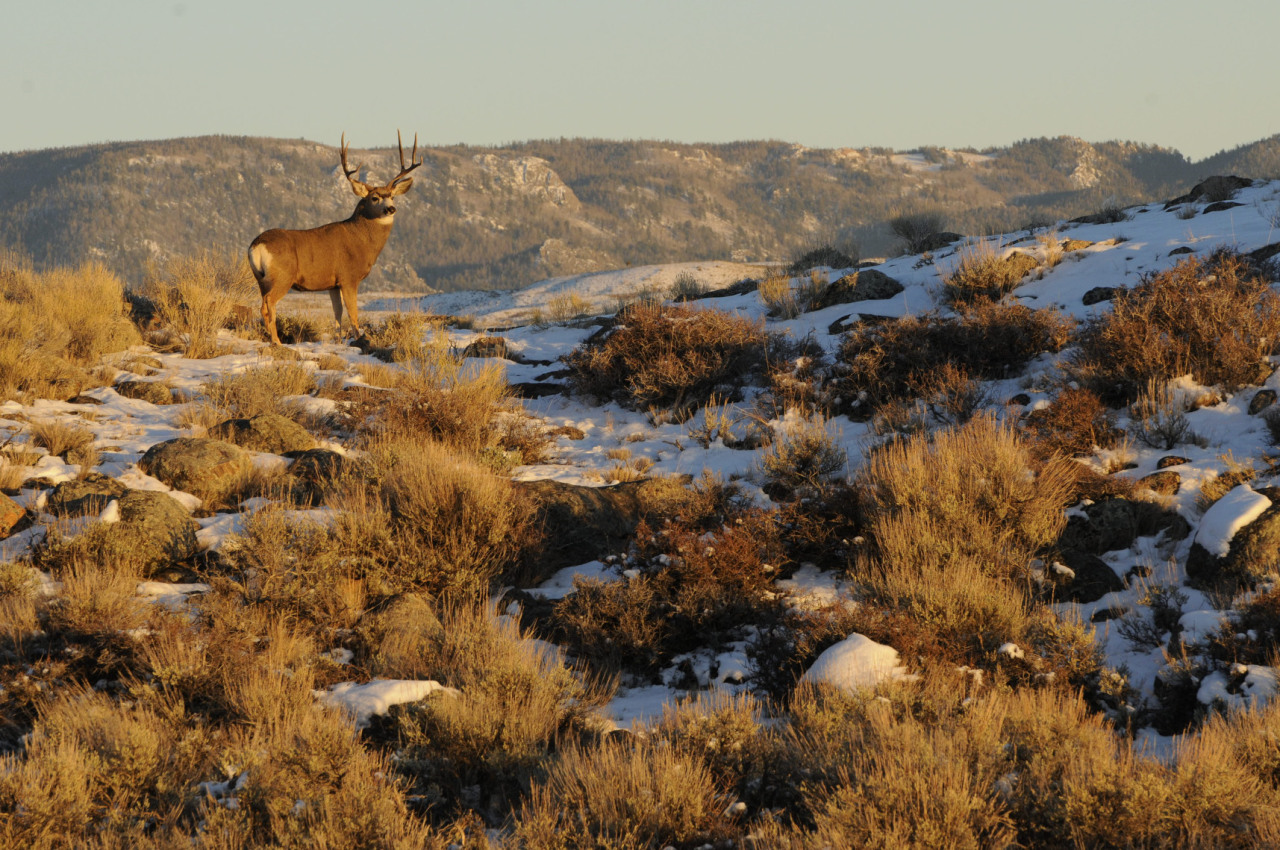Head south from Yellowstone’s geysers and the Tetons’ snow-capped peaks and you’ll find an entirely different – but equally spectacular – scenic experience in southwest Wyoming’s high desert. The region’s wide open spaces, wild and diverse landscapes, and unique geological formations provide endless opportunities for adventure and solitude. These lands are also home to a wide range of wildlife, including a significant section of the longest known mule deer migration corridor in North America, rare desert elk, and critical habitat for the greater sage-grouse and other sagebrush dependent species.
But southwest Wyoming’s high desert is currently facing tough challenges about where industrial development should or should not happen—and how to balance wildlife habitats, open space, and wild lands with energy and mining interests. Fortunately, we all have a voice in how our public lands are managed. Please tell the Bureau of Land Management (BLM) to preserve the wild character of southwest Wyoming’s high desert wonders
Northern Red Desert
Lofty buttes, winding and colorful badlands, expansive sagebrush ridges, salt scrub basins, and seemingly endless open spaces all characterize the Northern Red Desert. The 150-mile long Red Desert to Hoback mule deer migration corridor winds through the Desert to the herd’s winter ranges near Superior, Wyoming. Photo by Kyle Wilson.
Big Sandy Foothills
The grand entrance to the southern Wind River Range, the Big Sandy Foothills’ wide open spaces provide some of the best basin-to-mountain views in western Wyoming. And this landscape has merit in its own right: the area is so rich in biodiversity and contains such important habitat that local wildlife managers refer to this landscape as “the Golden Triangle.” This is one of the quintessential sagebrush seas, above which the aspen and pine-clad Prospect Mountains rise. The Red Desert to Hoback migration corridor crosses the Foothills and picks up thousands of mule deer that winter there—as do huge herds of elk that descend from the Winds. Much of the Big Sandy Foothills is core greater sage-grouse habitat—Brewer’s Sparrow, Sage Sparrow, Sage thrashers, golden eagles, badgers, coyotes, red fox, ground squirrels, and more call these wild sagebrush hills home. Photo by Joe Riis.
Little Mountain
Rising above the desert and above the Flaming Gorge National Recreation Area, Greater Little Mountain’s high elevation forests, meadows, and drainages are a paradise for hunters and anglers, and prized by hikers, cross country skiers, and other outdoor recreationists. Photo by Shelby Perry.
Devil's Playground and Cedar Mountain
In addition to the Devil’s Playground region’s outstanding wilderness qualities and incredible views, the eastern half of the expanse contains archaeological and cultural sites dating back as far as 9,000 years as well as widespread fossil deposits. This little-visited area is a diamond in the rough for those who want to get off the beaten track. Photo by Soren Jespersen.
Greater Adobe Town
One of the most iconic Wild West landscapes in Wyoming’s Red Desert, awe-inspiring geologic features and stunning views make Greater Adobe Town an exceptional place for backcountry recreation. Remnants of our natural and human history, from fossil resources of the Eocene period to ruins with links to Butch Cassidy and his Powder Wash Gang, can all be found by wandering through the hoodoos and badlands and juniper-lined washes. Photo by Paul Ng.
BLM Wyoming’s Rock Springs Field Office is currently in the process of developing a land use plan for these five wonders of southwest Wyoming’s high desert. This plan will determine areas in the field office that will be managed for wilderness character, open space, wildlife habitat, and recreational opportunity and those that will be available for potential development. Add your voice to protect these five incredible places!




